Ship owners lobby group Cruise Lines International Association (CLIA) has outlined a four-phase pathway to resume cruising in Australia, designed to align with government plans to revive tourism and reopen borders.
The cruise pathway has been developed in response to the four-phase National Plan agreed by Australian governments, which sets out key stages of reopening and the national vaccination targets that trigger them.
As Cruise Passenger reported last week, the federal government has yet to start serious talks on plans for a cruise restart with CLIA, though the Health Department has acknowledged it will do so once its own plans are complete.
In a veiled reference to the frustration being felt, CLIA chair Gavin Smith of Royal Caribbean spelt out how hard it had been to get those talks started with federal and state health departments. “But despite the frustrations, we remain respectful,” he said.
He revealed that CLIA was negotiating to try and get exemptions for individual ships, and change the current three-month bans on foreign flagged vessels to rolling monthly bans as vaccines kick in.
He maintained that cruising would be the safest holiday in Australia when it was allowed at the end of the year, with all crew and passengers vaccinated, QR codes to track movements and full hospital facilities on site.
“We’re close to making a breakthrough,” he said.
His line, Royal Caribbean, has Ovation of the Seas scheduled to start cruising in Australia in December.
Ponant’s Sarina Bratton spoke of her line’s desperate attempts to re-start expedition cruising both in Australia and New Zealand and the human toll of failing to get these cruises approved by governments despite enormous work on crew quarantines and vaccinations.
If there isn’t movement soon, she suggested, the industry could be “marching on the streets”. Other countries were already cruising and “if we’re not careful we’ll get left behind”.
CLIA Managing Director Australasia Joel Katz said today that aligning the industry’s pathway with the government’s national plan would help provide certainty for the more than 18,000 Australians whose jobs rely on cruising. It would also allow the implementation of the extensive health protocols developed by cruise lines globally in response to COVID-19, which are already operating where cruising has restarted overseas.
“This is about having plans agreed in advance so that we’re ready as conditions improve with the rising vaccination rate,” Mr Katz said. “Our governments have created a four-phase plan to reopen Australia, and we’re now calling for our own four-phase pathway to be included in this process.”
Key goals in the cruise industry pathway are:
• Current Phase (Vaccinate, prepare and pilot) – Agreement between governments and the cruise industry on a framework for cruising’s resumption and the implementation of the industry’s layered health protocols including testing and vaccination, with potential to pilot small domestic expedition cruises as health conditions allow.
• Vaccination Transition Phase (70% of adult population vaccinated) – Resume limited domestic-only cruises within an Australian bubble, in line with the industry’s extensive health protocols.
• Consolidation Phase (80% of adult population vaccinated) – Achieve more extensive domestic sailings and begin carefully controlled trans-Tasman itineraries and other regional “bubble” sailings when conditions allow, with ongoing health protocols in place.
• Post Vaccination Phase – Resume carefully controlled international itineraries from Australian ports with ongoing health protocols in place.
Mr Katz said Australia was now the only major cruise market in the world where governments had yet to achieve progress on a framework for cruising’s resumption.
“Almost one million people have successfully sailed in countries where cruising has already resumed, including in the US, Europe and parts of Asia,” Mr Katz said. “Cruising involves long lead-times ahead of operations, so we need a plan in place now so we can work towards reviving an industry worth more than $5 billion a year to communities around Australia.”

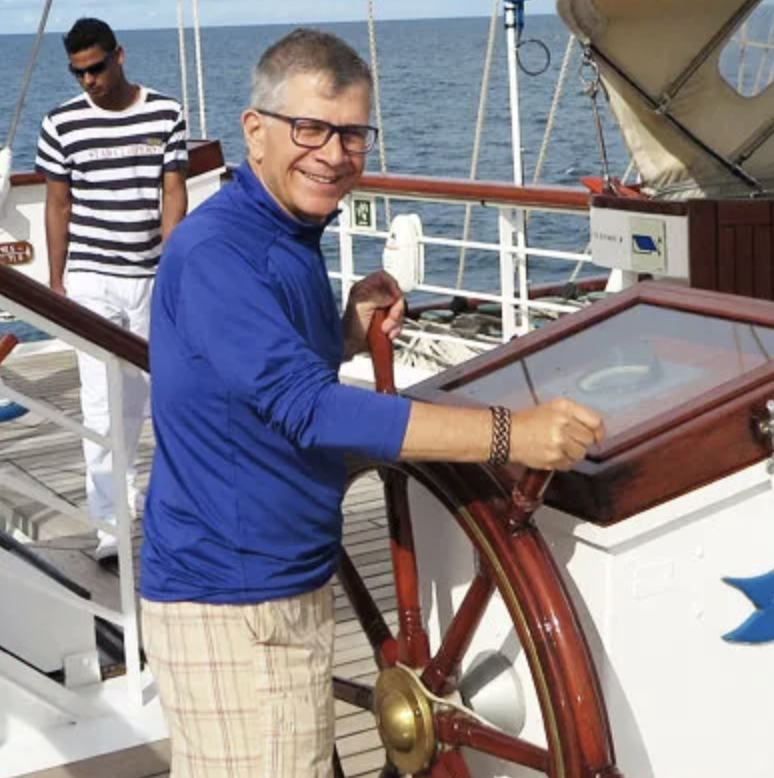
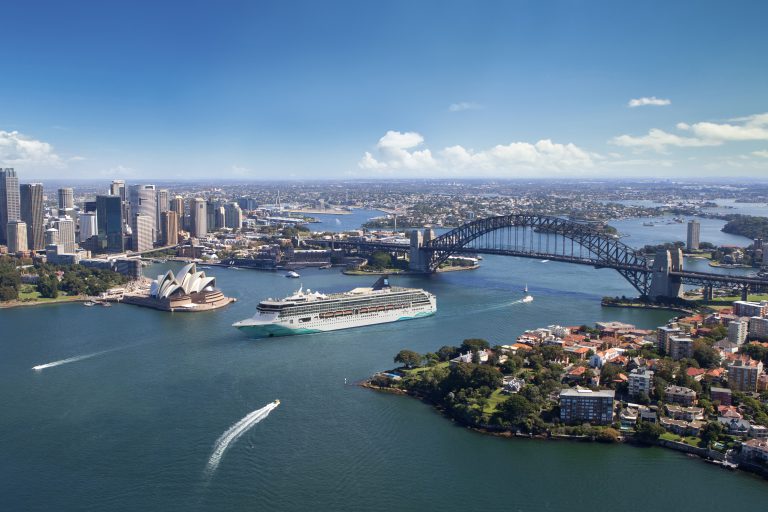
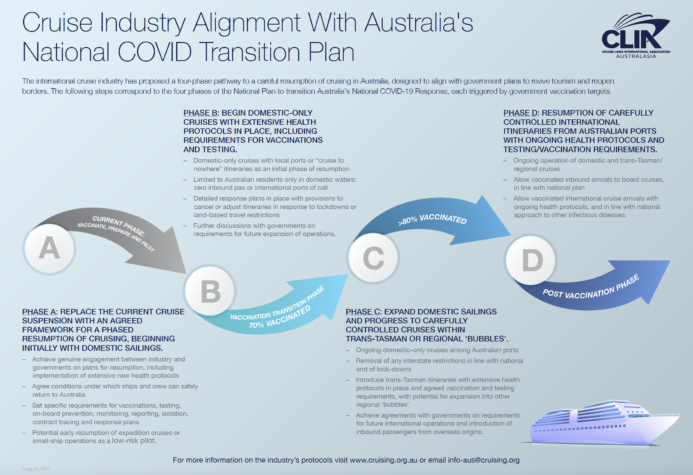
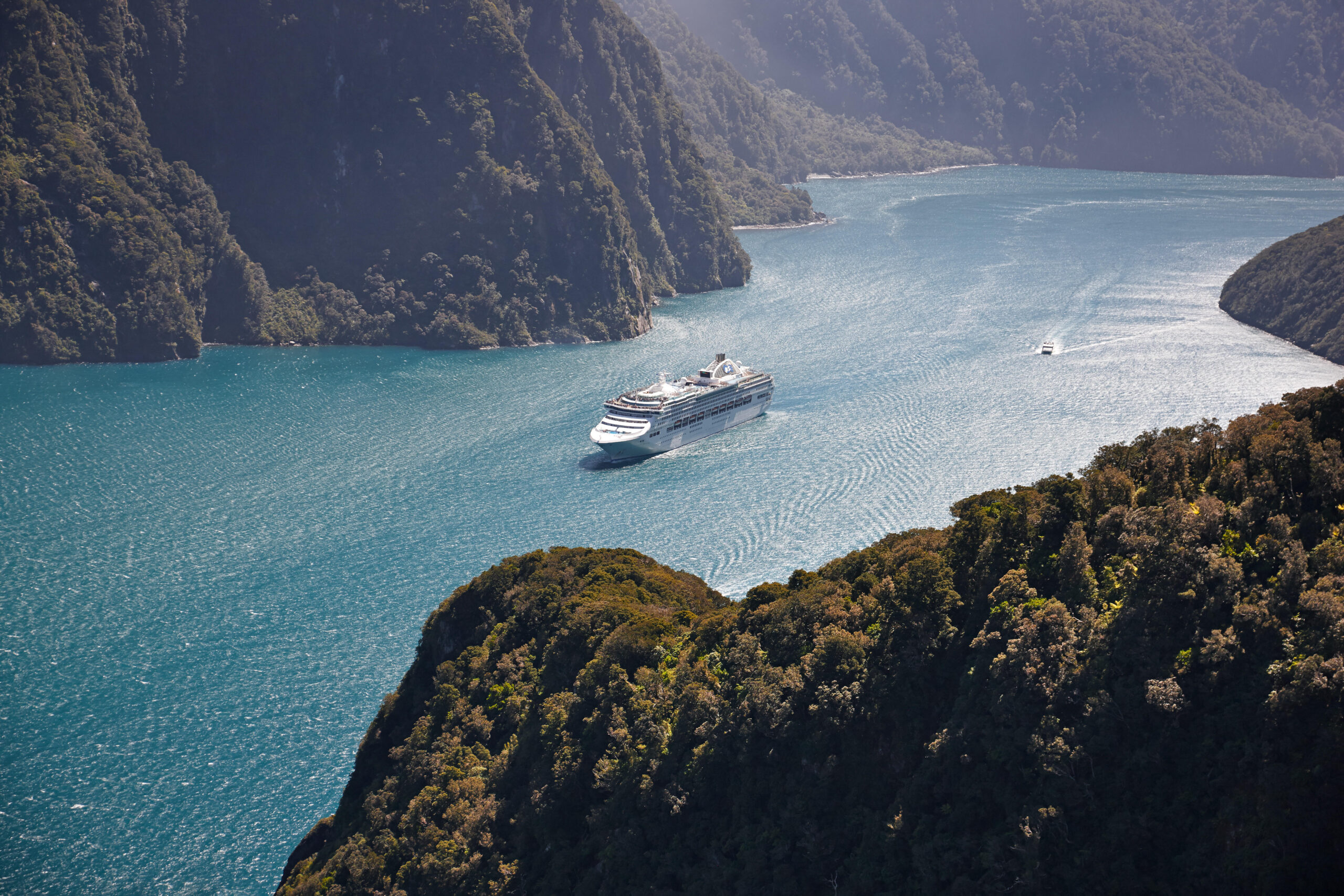
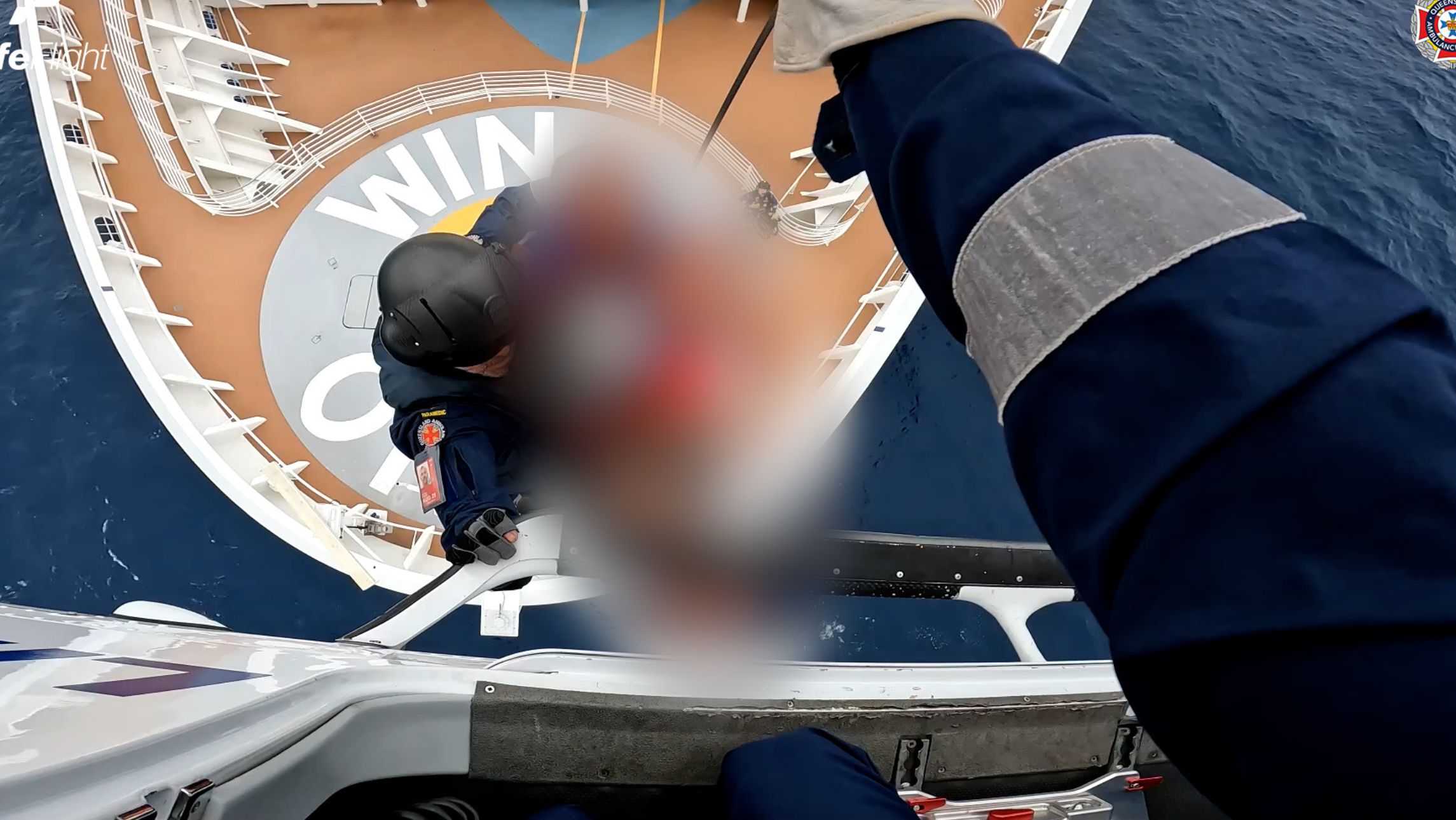

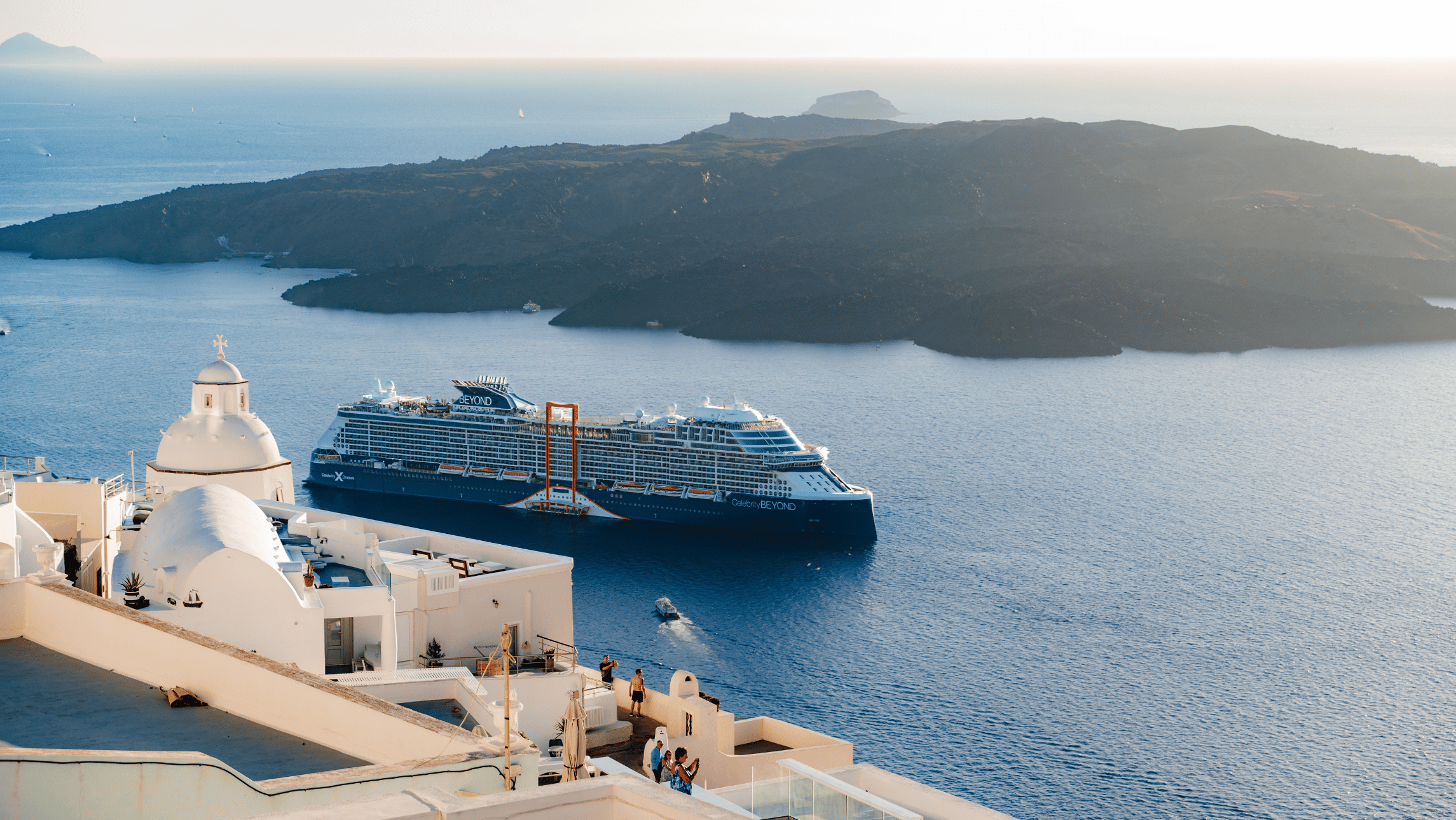



Would love to be cruising again . Happy to just cruise out to sea , around Australia and call into ports around Australia.
Would keep us cruislings happy and help to boast the economy .
Fingers crossed it happens soon
I can’t wait for international cruises to start from australia, i miss my cruising, hurry up Australia government
We have to live with the virus like any other before it.
Lock downs are killing us !
I am a universal man, I breathe on travel the world !
Let international travel begin by air and by sea !
I believe cruising could commence from the states which have had very few cases and have their borders closed to NSW & Victoria,
Cruises could leave from Hobart, Feemantle, Adelaide or even Cairns/ Brisbane to begin with, then once the state borders open return to Sydney & Melbourne. Cannot understand why the whole of Australia remains banned for cruise ships.
I would love to be able to cruise again but not overseas but close to home in Australian waters.
Booked 2 cruises but they did not happen due to Covid 19 and still have problems with cruise agent with regards to getting monies back.
So because of our ages as hubby is 84 and me 76 we would try again in 2022 or 2023 to go cruising again.
We have been cruising with Princess and Royal Caribbean International for all of our 10 cruises we have done.
Hopping we can again go and enjoy ourselves on cruise ships in the coming years to follow.